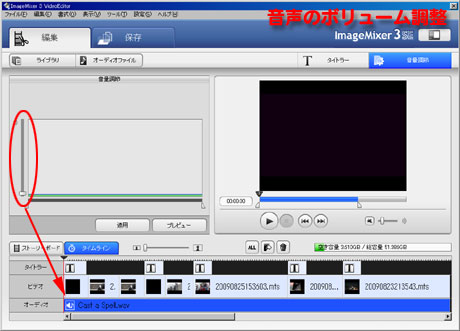

You’ll want to use your notes to alter the Dockerfile or add commands to the container startup scripts. Always remember to write down the steps taken to get the container working. If you forget all of the files you’ve touched on the container, you can alway kill the pod and the container will restart without your changes. You can edit files using vim to tweak the container until you understand what’s going on.
Image mixer 3 init file install#
apt-get install -y curl vim procps inetutils-tools net-tools lsofĪt this point, it’s up to you to figure out the problem.Depending on the package manager you found, use one of the following commands to add useful debugging tools: Now you need to add the necessary tools to help with debugging. One of the following commands should work depending on the operating system:ĭockerfile maintainers often remove the cache from the package manager to shrink the size of the image, so you may also need to run one of the following: In some cases we’ve seen Centos and Fedora, which both use the yum package manager. Most containers these days use Alpine Linux (apk package manager) or a Debian, Ubuntu (apt-get package manager) based image.

We typically try all of the common package managers until we find the right one. Using the Entrypoint and Cmd you discovered earlier, you can execute the intended startup command and see how the application is failing.ĭepending on the container you’re running, it may be missing many of the tools necessary to debug your problem like: curl, lsof, vim and if it’s someone else’s code, you probably don’t know which version of linux was used to create the image. You can now use kubectl or k9s to exec into the container and take a look around. Image: /elasticsearch/elasticsearch:7.10.2
Image mixer 3 init file how to#
Here’s how to configure k8s to override the container Entrypoint: Updating the deployment and setting the container Entrypoint or k8s command temporarily to tail -f /dev/null or sleep infinity will give you an opportunity to debug why the service doesn’t stay running. In order to understand what’s happening, it’s important to be able to inspect the container inside of k8s so the application has all the environment variables and dependent services. Now that you have all that background, let’s get to debugging the CrashLoopBackOff. Status: Downloaded newer image for docker inspect /elasticsearch/elasticsearch:7.10.2 | jq '.ContainerConfig docker inspect /elasticsearch/elasticsearch:7.10.2 | jq '.ContainerConfig. Here we use jq to filter the JSON response from docker docker pull /elasticsearch/elasticsearch:7.10.2ħ.10.2: Pulling from elasticsearch/elasticsearchĭigest: sha256:d528cec81720266974fdfe7a0f12fee928dc02e5a2c754b45b9a84c84695bfd9 First, we pull the container locally using docker pull, then we inspect the container image to get the Entrypoint and Cmd: When dealing with either off the shelf containers, using someone else’s container and you don’t have the Dockerfile, or you’re inheriting from a base image that you don’t have the Dockerfile for, you can use the following steps to get the values you need. If you have the Dockerfile that created the Docker image, then you likely already know the Entrypoint and Cmd, unless you aren’t defining them and inheriting from a base image that has them set.

In order to get the startup command when you’re dealing with someone else’s container, we need to know the intended Docker Entrypoint and Cmd of the Docker image.

There are a few tricks to understanding how the container you’re working with starts up. Here’s an example of an OCI runtime error, trying to execute: “hello crashloop”:
Image mixer 3 init file code#
Two common problems when starting a container are OCI runtime create failed (which means you are referencing a binary or script that doesn’t exist on the container) and container “Completed” or “Error” which both mean that the code executing on the container failed to run a service and stay running.


 0 kommentar(er)
0 kommentar(er)
